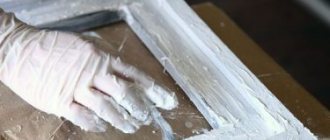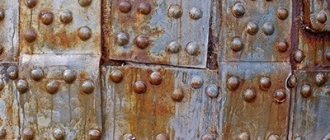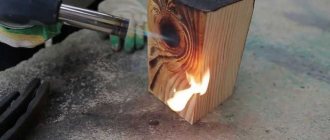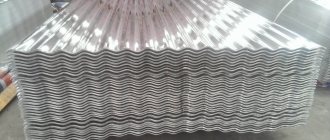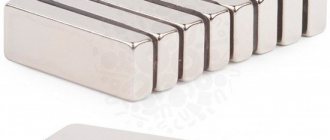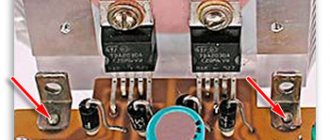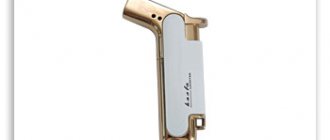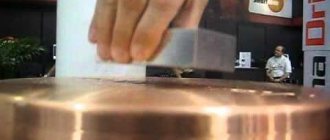Who among us has not dreamed of holding an old book or map in our hands, or receiving a letter from the past? It would seem that this is quite problematic, because antique books are expensive, and letters are not kept for so long.
But what if you try to make a book or piece of paper, a letter, a map or a postcard visually older yourself? It's so simple!
Let's talk to you about how to age paper with and without text, and in what cases you may need this skill.
Decor using paper
First of all, let's consider this question: why do we need aged paper at all and what can and should it be used for?
First of all, it is needed for the design of various crafts: postcards, photo albums, invitation leaflets. It can also be used to create original albums, writing sheets, thus showing your originality.
Agree, an “antique” book, a vintage postcard or just a sheet of parchment with a drawing or map will delight any person, no matter how old he is and no matter what his hobby is. Let's talk about how to make aged paper at home without resorting to outside help and without spending a lot of money on it.
How to make antique paper 100% authentic?
For this purpose, the skill of using a lighter will come in handy. Picturesque scorch marks along the edges, and perhaps even in the center of the sheet, a sort of burnt outline, will make an indelible impression on the one for whom the scorch is being prepared. To more accurately depict the contours that need to be burned, you can use a pencil to draw lines.
From such sheets it is quite possible to spin scrolls, which are used as invitations to weddings and other events. To make the scroll truly antique, you will need to decorate it with a wax seal, although wax can also be used. Perhaps by experimenting, you will be able to discover your own way of sealing ancient scrolls.
Just before you spend a lot of time, coffee, paper and effort, you should mentally evaluate the success of your idea. Perhaps the invitees do not have a craving for vintage and will perceive the invitation as a way to offend them or to save money on postcards. After all, not everyone knows how to make old paper, so only those who have tried to do similar things themselves will be able to understand the depth of the efforts.
Treating paper with tea
First, let's talk about how to change a sheet of paper using various liquids. Let's start with one of the most famous methods, that is, we will discuss how to age paper with tea. This is the simplest and most accessible method for everyone.
In order to age paper using tea, you will need strong brewed tea at the rate of 5-10 teaspoons of tea leaves per glass of water (if tea is in bags, then three bags of tea leaves will be enough). The tea should be brewed for 10 minutes, then it must be strained.
Having poured the finished tea into a small bath, soak the sheet of paper you need in it (you can crumple it first, so that the paper is better saturated with water, and also in order to give it an older and shabby look), let it sit for a couple of minutes. Then we take it out of the water and wait for the sheet to dry. Finally, iron it with an iron, leveling the surface of the sheet.
Tea method
This method of converting paper is considered the simplest, since nothing special is required except tea. To prepare we will need:
- 7 teaspoons of tea leaves.
- 1 glass of hot water.
Brew tea in a glass of boiling water, and then pour it into a large container; a plastic basin is also suitable for this.
Dip the tea into the paper prepared for aging and keep it there for 5 minutes to completely soak it. Then you need to remove the paper and fold it several times, carefully squeeze out the excess tea with your palms.
Next, we unfold the sheet and hang it out in the open air (on the balcony) to dry.
When the paper is almost completely dry, remove it and wrap it in sheet foil. Iron the sheets until completely dry.
Let's resort to coffee
Now let's talk about how to age coffee paper. This method of aging is not much different from the previous one. The difference is in the brew itself. For a glass of water you need 5 teaspoons of natural ground coffee. Brewed coffee should be steeped for 10 minutes, then strained. At the same time, sediment should not get into your bath in which you age the paper. Otherwise, streaks and marks may remain on the paper. In some cases, the sediment can be used to create scuff marks and brighter small spots on a piece of paper.
The time for which a sheet of paper should be immersed in the solution is no more than five minutes, otherwise the sheet will get wet and tear when trying to remove it. In addition, we do not recommend that you put several sheets of paper together in the tray, otherwise they will bunch up into one soggy piece of paper and tear.
The sheet of paper should also be dried on a flat surface, and after drying it is ironed using an iron.
If you don’t have natural coffee at home, you can replace it with instant coffee.
Adviсe
- For a darker color, you can replace tea with coffee. Follow the same staining procedures as above.
- If the dried paper curls too much, place it between two large, heavy books overnight.
- If the page you want to age is part of a magazine, separate the pages from each other with wax paper. Use tea sparingly and wipe off any excess with paper towels.
- To create the effect of age spots, sprinkle a small amount of coffee granules on the paper after applying the tea. Let them sit for 2 minutes and then dry them off with paper towels.
Using milk
Now let's talk about how to age paper using milk. To do this, you will need milk with a high percentage of fat content. It’s better if it’s completely homemade. You should also find a brush to apply it with.
We crumple the sheet of paper, then use a brush to thoroughly paint it with milk on both sides. After it is well soaked on both sides, lay it out on a flat surface. Leave it for a while to dry. Then iron the sheet using an iron. In this case, the temperature should be high enough, and dark brown spots should appear on the paper itself.
In addition, you can also dry a sheet of paper in a microwave oven or using a hair dryer. The main thing in this aging method is the effect of high temperature on the solution itself, with which the sheet of paper is impregnated.
What you will need
- Baking tray
- Oven
- Paper
- Black tea bags
- Water
- Kettle
- A bowl
- Brush (optional)
- Granulated coffee (optional)
- Tack
- Fork or spatula
For an alternative method
- Microwave cup
- Tea bags
- Dishes
- Water
- Microwave
- Spoon
Sent by: Vasilyeva Svetlana. 2017-11-12 11:17:56
Related links:
Lemon juice
Let's say a few words about how to age paper using lemon juice. This is another quite interesting method and probably known to many. So, aging paper using lemon juice. If you were into detective stories as a child, then you probably know that many criminals and even detectives wrote their secret notes using lemon juice. In this case, the inscription appeared only under the influence of high temperatures.
To age paper using lemon juice, you will need the sheet of paper itself, lemon juice, and a hair dryer. A hair dryer can replace a microwave or a hot iron.
Squeeze the juice from the lemon. Then we apply it to a sheet of paper using a sponge, brush, or simply dipping it in a container with lemon juice. Then you should place the sheet on a flat surface and dry it with a hair dryer. As it dries and is exposed to heat, it will begin to darken.
Now you also know how to artificially age paper using lemon juice.
Alternatively, this method can be used for additional leaf decoration. So, you can make inscriptions on a sheet of paper using lemon juice, and then develop them. This is a rather original way to decorate cards and albums.
What techniques exist to give an antique effect to paper?
There are special techniques that can recreate this or that effect.
- Craquelure is the effect of creating a crack in a varnished or primed coating. They recreate the illusion of cracks in paintings. In ancient times, craquelures (cracks) appeared in paintings due to violations of technology. For example, due to insufficient primer, the underlying layers of paint absorbed moisture from subsequent new layers, causing them to quickly dry out and crack. There are special craquelure paints and varnishes that, when applied to paper, give the effect of cracks.
- Distressing is the artificial aging of paper using organic products such as coffee, tea or milk. Using a ruler and scissors, the structure of the edges of the paper is loosened so that they look shabby from time to time. You can find special distress ink in office supply stores. After uniform application to a sheet of paper and complete drying, traces of uneven drying, abrasions and fading remain.
- Embossing or stamping on paper. It is obtained using stencils or stamps. Food foil, glitter powder, etc. are also suitable. Using the embossing method, raised initial words are created, which are outlined with gold or silver paint. Against the background of aged paper, all this looks very impressive and unusual.
- Journaling. This method helps to recreate text typed on an antique pre-war typewriter. Journaling is used to describe events depicted in photographs. It looks much more appropriate than a regular handwritten note.
Aging paper using potassium permanganate
If you have potassium permanganate (that is, just potassium permanganate) at home, then it will be quite easy for you to age any paper. To do this, you need to pour several granules of potassium permanganate into the container in which you are going to paint the sheet, then dilute it in cold water until completely dissolved. In this case, the solution should be a rich dark pink color. When working with the solution, be sure to wear gloves so as not to stain or burn your hands.
After this, dip the paper in water for five minutes. When it is sufficiently saturated with water, take it out of the container and lay it out to dry.
After drying, the paper acquires a pleasant brown tint. Now you also know how to age paper using potassium permanganate. As you can see, this is a rather interesting and simple method. In addition, with the help of potassium permanganate you can artificially age fabric items.
What do you need to prepare before work?
Aging is one of the types of making colored paper. The essence of the process is to color the sheet in shades of material that has yellowed over time. One of the options for aging can be considered tinting in greenish, blue or pink.
This operation can be done in Photoshop by printing the resulting drawing. But to make high-quality material for scrapbooking or other purposes, you will have to do the painting yourself. Since the work involves the use of dyes, you need to take measures to protect clothes, hands and table surfaces from stains.
Paper dyes can be found in any kitchen, so no special chemicals are needed. You need to prepare:
- natural ground coffee (you can also use instant coffee);
- tea leaves;
- milk;
- sandpaper;
- iron;
- lighter or candle;
- photo cuvette or other wide flat dish.
In addition to the above, cutting tools may be useful. To make aged colored paper you will need: pharmaceutical green, laundry blue or methylene blue from a pet store, and a solution of potassium permanganate. For rapid aging, you can also use a pharmaceutical solution of iodine: depending on the composition of the material, it sometimes gives unexpected and unpredictable color effects.
Aging paper using a candle
Now let's move on to thermal methods of aging paper. First of all, let's talk about how to change the age of paper using fire.
The simplest and most likely known to many method is to use fire to age the paper and give it the appearance of something that has survived a fire.
For this you need a candle. In this case, you will have to age the paper over a sink, so that in case of fire, you can quickly extinguish it and prevent a fire.
We place the candle in the candlestick and then place it in the sink. After this, light the candle. We take the sheet of paper you need in our hands and begin to carefully move it over the candles. In this case, there should be a distance of at least 10 cm between the paper and the fire. The paper should not be held in one place. So you can set it on fire.
What can you dissolve paper in?
You can dissolve it using effective means at hand.
- Hot water
- Detergent compositions
- Vinegar
- Pepsi and Cola
Interesting materials:
How is the state budget formed and spent? How is the 1st law of thermodynamics formulated? Which camera is better: DSLR or digital? How to iron Tencel? How to cook buckwheat for diabetes? How to speak Russian in Phasmophobia? How to speak in Phasmophobia? How to competently refuse Snils? How to group data in Excel? How to group emails in Gmail?
Microwave oven as a means for aging paper
As you know, paper darkens when exposed to heat. Heat can be emitted either by fire or by a device powered by electricity - a hairdryer, stove, even an electric fireplace. But let’s talk about something that is probably in every home - a microwave.
One of the easiest ways to age paper is to temporarily place it in a microwave oven at a temperature of 200 degrees Celsius. In this case, the paper itself should be pre-moistened in water or a solution of tea (coffee).
Alternatively, you can place the paper in the refrigerator first and then in the microwave. This way you can also age the paper for several years. Now you know how to age paper in the microwave.
Service Temporarily Unavailable
Gradually the sun will do its job. 5If you need to age a letter that was recently written, place several layers of blotter on your paper and cover it with some heavy object on top. The fresh ink will be absorbed, and within a day it can be placed in the sun for further aging. 6If you are not going to deceive the examination, and aging the ink has only an aesthetic function, soak the sheets in coffee. Pour 4 tablespoons of coffee with 250 milliliters of boiling water. Saturate the sponge evenly with the drink and run it over the paper. Remove any smudges, dry the paper with a hairdryer and do the same on the other side. At the same time, you can carefully burn the edges with a lighter, and the ancient parchment is ready. In a similar way, you can treat paper with green tea.
More details: https://www.kakprosto.ru/kak-102763-kak-sostarit-chernila#ixzz3d4JM1USthttps://www.kakprosto.ru/kak-102763-kak-sostarit-chernila
Uploaded 3 years ago from www.kakprosto.ru
Aging with the sun
Well, those who want to add age to paper in the most natural and simple way possible, without resorting to fire or electrical appliances, or various tinctures, should use the help of the sun.
On hot summer days, you can use the simplest method for aging paper - solar. To do this, you need to put a sheet of paper or even hang it so that sunlight falls on it all the time. In a few days it will be ready. But you should age the paper in advance in this way.
Aging by the sun's rays
If there is no tea, milk, or coffee in your house, then we recommend the easiest way to make a sheet of antique paper using the sun. However, based on the conditions of our climate, it is sometimes much easier to get black tea or a cup of milk than the shining sun. But if you decide to do aging in the spring or summer, then everything is in your hands.
So, as you already understand, the essence of the method is extremely simple. All you need is to crumple up a piece of paper. It is best to use a thin sheet here. And hang it by the tip in a sunny place. Keep in mind that the sun moves during the day, which means the leaf should move after it. Direct sunlight will make the leaf yellower, and this effect can easily be mistaken for the effect of aged paper.
conclusions
There are many ways to age a sheet of paper. We have discussed only the most famous and used of them. All of these methods work equally, although the appearance of the paper may differ.
If you are in doubt which method to choose, experiment with each of them and compare the results. Remember that the appearance of aged paper largely depends on how strong the solution you treated it with, as well as how strong and long the thermal exposure process was.
Methods
There are many ways in which you can “add age” to paper. The most famous of them is aging it with the help of tea and coffee, as well as open fire or the heat of electrical appliances, sunlight. You can also “spoil” the paper with milk, lemon juice and potassium permanganate.
For those who are interested in how to age paper with text, we note that the latter should only be printed with a laser printer. If the text was printed using an inkjet printer, it will simply flow under the influence of water. In order to age paper with such text, only methods of heat treatment of paper are suitable.
We will look at each of these methods so that you can independently choose the one that is more convenient for you. If you want, you can try changing the paper using each of them and then compare the results.
